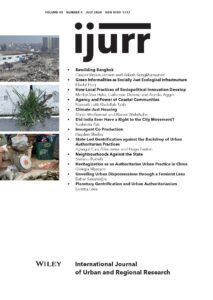Heritage preservation practices continue to be adopted as a tool to promote the regeneration of historic areas in China. Taking the experience of the Old Town of Lijiang (Dayan) as its starting point, this essay considers heritagization both as a process of gentrification and as an authoritarian urban practice that operates behind the regeneration process, contributing to the transformation of historic neighbourhoods into objects of display. It focuses particularly on the role played by local state actors and heritage regulations, showing how the construction and rearrangement of space as a form of ‘ordering’ serves the dominant classes, thus legitimizing the transformation of Lijiang and directly shaping people’s lives. Finally, following recent accounts of gentrification led by historic preservation, the essay reflects on the ways in which heritage discourses and participatory-like practices may be deployed to legitimize gentrification and hinder various forms of resistance at the local level.
Details
Written by:
Giorgia Mascaro
Digital Object Identifier (DOI)
https://doi.org/10.1111/1468-2427.13238
About DOI

